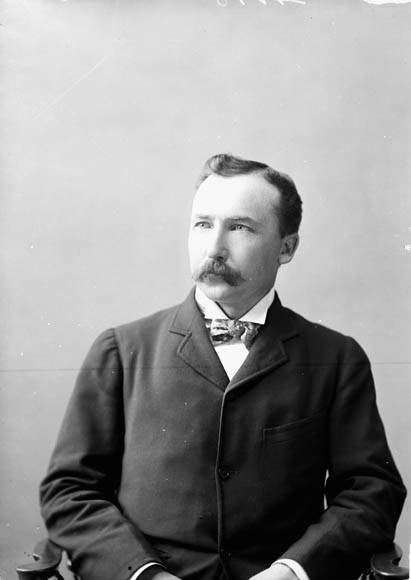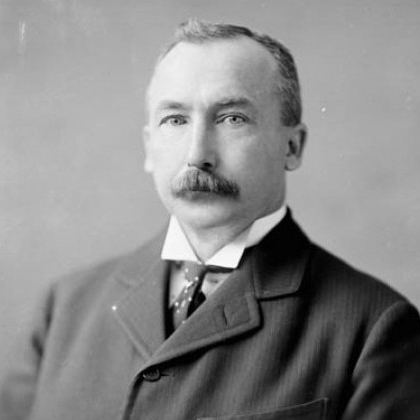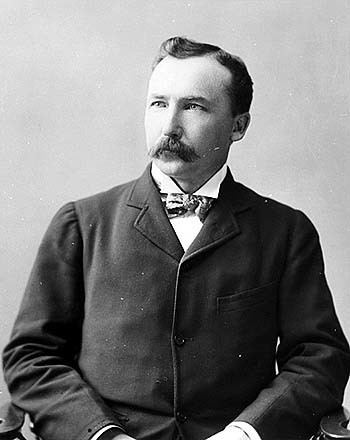Name Clifford Sifton | ||
 | ||
Education Victoria University, Toronto | ||
Sir Clifford Sifton 2013
Sir Clifford Sifton, (March 10, 1861 – April 17, 1929), was a Canadian lawyer and a long-time Liberal politician, best known for being Minister of the Interior under Sir Wilfrid Laurier. He was responsible for encouraging the massive amount of immigration in Canada which occurred during the first decade of the 20th century. In 1905, he broke with Laurier and resigned from cabinet on the issue of publicly-funded religious education in the new provinces of Alberta and Saskatchewan.
Contents
- Sir Clifford Sifton 2013
- A Familys Journey to the Canadian West Silent Movie
- Early life
- Manitoba provincial politics Attorney General for Manitoba
- Federal politics Minister of the Interior
- Family
- References

A Family's Journey to the Canadian West (Silent Movie)
Early life

Born in Middlesex County, Canada West (now Ontario), Sifton's father, John Wright Sifton, was a contractor and businessman who moved with his family to Manitoba when Clifford was a boy. He trained as a lawyer and graduated from Victoria University in the University of Toronto, where he was the founding manager of Acta Victoriana.
Manitoba provincial politics: Attorney General for Manitoba

Sifton worked on his father's political campaigns before being himself elected to the legislative assembly of Manitoba in 1888. Sifton served in the cabinet of Thomas Greenway from 1891 to 1896 as attorney general and Provincial Lands Commissioner. He played a role in negotiating the Laurier-Greenway Compromise, which temporarily resolved the Manitoba Schools Question.
Federal politics: Minister of the Interior

In 1896, Sifton was elected a Member of Parliament and served as Minister of the Interior under Laurier. As Minister of the Interior he started a vigorous immigration policy to encourage people to settle and populate the West. Sifton established colonial offices in Europe and the United States. He enticed people to come to western Canada. While many of the immigrants came from Britain and the United States, there was also, to Canada, a large influx of Ukrainians, Scandinavians, Doukhobors, and other groups from the Austro-Hungarian Empire. He famously defended the "stalwart peasants in sheep-skin coats" who were turning some of the most difficult parts of the western plains into productive farms.
Between 1891 and 1914, more than three million people came to Canada, largely from continental Europe, following the path of the newly constructed continental railway. In the same period, mining operations were begun in the Klondike and the Canadian Shield.
In the federal election of 1900, Sifton retained his seat against a strong challenge from former Manitoba premier Hugh John Macdonald. After presiding over the creation of Alberta and Saskatchewan in 1905, Sifton resigned from cabinet following a dispute with Laurier over religious education.
Especially later in his life, Sifton battled increasing deafness, which precluded any further potential political advances.
Sifton retired from politics in 1911 but crusaded against the government policy of reciprocity, because he believed that increased economic integration between Canada and the United States would result in Canada being taken over by the Americans.
Sifton died in 1929 in New York City, where he had been visiting a heart specialist. He left a fortune estimated at $3.2 million, equivalent to about $45 million in present-day terminology. Sifton is buried at Mount Pleasant Cemetery, Toronto.
Family
Sifton, then a young lawyer, was married at Winnipeg, Manitoba, on August 18, 1884, to Elizabeth Armanella Burrows. She was the daughter of Henry James Burrows and his wife, Sarah Sparks. Elizabeth was born in Ottawa, Ontario, and educated at the Ottawa Ladies' College. The couple had five sons. She founded and presided over the Woman's Christian Temperance Union (WCTU) at Brandon, Manitoba.
